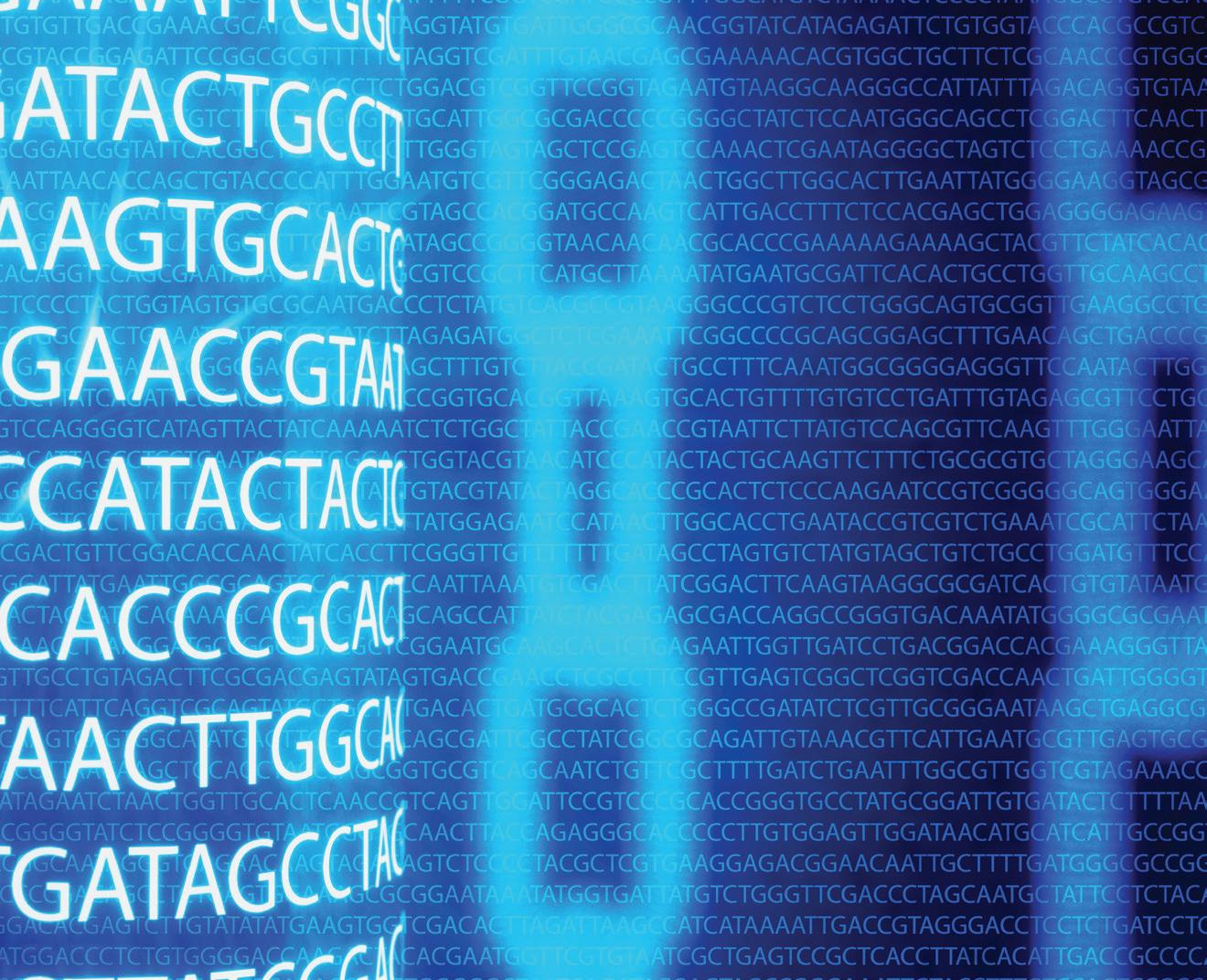
4 minute read
BIOINFORMATICS IN THE HEALTH FIELD
Over the last few years, we have constantly been linking words in the area of medicine with others from science and technology, as we hear more and more about fields such as “biotechnology,” “biomedicine,” and “bioinformatics.” What does all of this mean for us and for our health in general? These new and diverse multidisciplinary groups have made possible solutions and techniques for diagnosis and treatments that were not available before, or have improved the ones that were already in use. Bioinformatics, for example, is a field that combines biological data with health information, analyzing it so that it can be used in the medical field (Majhi et al., 2019).
A very good instance of this is the Human Genome Project (Venter et al., 2001). While this did not provide us with a complete human genome, it did mark the beginning of human genomics and generated many new possibilities for using bioinformatics (Ahn, 2011). Thanks to a “reference genome,” made available through this project, it is now possible to compare a patient’s Jauregui et al., 2012). All this has been made possible through the collaboration between bioinformaticians, geneticists, biotechnologists, doctors, and specialists in many other fields.
Advertisement

While these developments have presented some new challenges and ethical dilemmas, they also represent countless possibilities for the diagnosis and prevention of diseases. One of the biggest challenges of using sequencing for diagnosis is the amount of storage space needed for this data. This is why one of the key steps is to determine which mismatches between the reference genome and the patient’s genome are significant.
The National Health Service (NHS), the public health system in the United Kingdom, has recently introduced the work of clinical bioinformaticians to improve their methods of diagnosis, with these clinical bioinformaticians working hand genome to this reference and, through the use of various tools, help in the diagnosis of multiple genetic diseases (GonzagaJauregui et al., 2012). The sequencing technology has improved greatly in the last few years, although it is still far from perfect.
But the ability to sequence a patient’s DNA is not enough to make a successful diagnosis or to predict a future disease. All the information obtained from sequencing a genome (or part of the genome) needs to be analyzed. This ranges from aligning the patient’s genome with the reference genome to finding the segments that might be related to a disease. Once the whole genome has been reduced to a few sequences, a geneticist or the clinician examining the case can make a diagnosis based on this information (Gonzaga-
in hand with geneticists and clinicians (Gallagher, 2018). In 2014, a successful study was performed by the NHS to determine the genetic cause of congenital cataracts, using DNA sequencing. Knowing this makes for more accurate treatment and will help with future diagnosis of this disease (Gillespie et al., 2014).
Another area where bioinformatics has proven to be of great help has been in finding a treatment for tuberculosis. One of the main problems for treating this disease resides in the fact that the bacteria that causes it, Mycobacterium tuberculosis, is able to resist antibacterial agents. Science and technology have identified the fragments in the DNA that make the bacteria resistant, which helps physicians choose the best drug for treatment (Bah et al., 2018). This discovery still has a long way to go before it can be applied to the prevention or better treatment of tuberculosis, but it certainly marks a great start.
It should be pointed out that many of the new technologies still have a long way to go before they will be perfected or even completely understood. But they are paving the way to better things, many of them considered impossible just a few years ago. By combining different fields and areas, we have finally started to be able not only to treat, but also to prevent. We are all looking forward to seeing these technologies more fully in action.

Reference
Majhi, V., Paul, S., & Jain, R. (2019). Bioinformatics for Healthcare Applications. 204–207. https://doi. org/10.1109/AICAI.2019.8701277
Venter, J. C., Adams, M. D., Myers, E. W., Li, P. W., Mural, R. J., Sutton, G. G., Smith, H. O., Yandell, M., Evans, C. A., Holt, R. A., Gocayne, J. D., Amanatides, P., Ballew, R. M., Huson, D. H., Wortman, J. R., Zhang, Q., Kodira, C. D., Zheng, X. H., Chen, L., … Zhu, X. (2001). The Sequence of the Human Genome. Science, 291(5507), 1304. https:// doi.org/10.1126/science.1058040
Ahn, S. (2011). Introduction to bioinformatics: sequencing technology. Asia Pacific Allergy, 1(2), 93–97. https://doi.org/10.5415/apallergy.2011.1.2.93
Gonzaga-Jauregui, C., Lupski, J. R., & Gibbs, R. A. (2012). Human Genome Sequencing in Health and Disease. Annual Review of Medicine, 63, 35–61. https://doi. org/10.1146/annurev-med-051010-162644
Gallagher, E. (2018, November 23). Day in the life: clinical bioinformatician - Genomics Education Programme. NHS. https://www.genomicseducation. hee.nhs.uk/blog/day-in-the-life-clinicalbioinformatician/
Gillespie, R. L., O’Sullivan, J., Ashworth, J., Bhaskar, S., Williams, S., Biswas, S., Kehdi, E., Ramsden, S. C., Clayton-Smith, J., Black, G. C., & Lloyd, I. C. (2014). Personalized Diagnosis and Management of Congenital Cataract by Next-Generation Sequencing. Ophthalmology, 121(11), 2124-2137.e2. https://doi. org/10.1016/j.ophtha.2014.06.006
Bah, S. Y., Morang’a, C. M., Kengne-Ouafo, J. A., Amenga–Etego, L., & Awandare, G. A. (2018). Highlights on the Application of Genomics and Bioinformatics in the Fight Against Infectious Diseases: Challenges and Opportunities in Africa. Frontiers in Genetics, 09. https:// doi.org/10.3389/fgene.2018.00575

Jocelyn Robles
B.S. in Biotechnology is currently a specialist in initiation of studies and closure of studies at CidVID.










